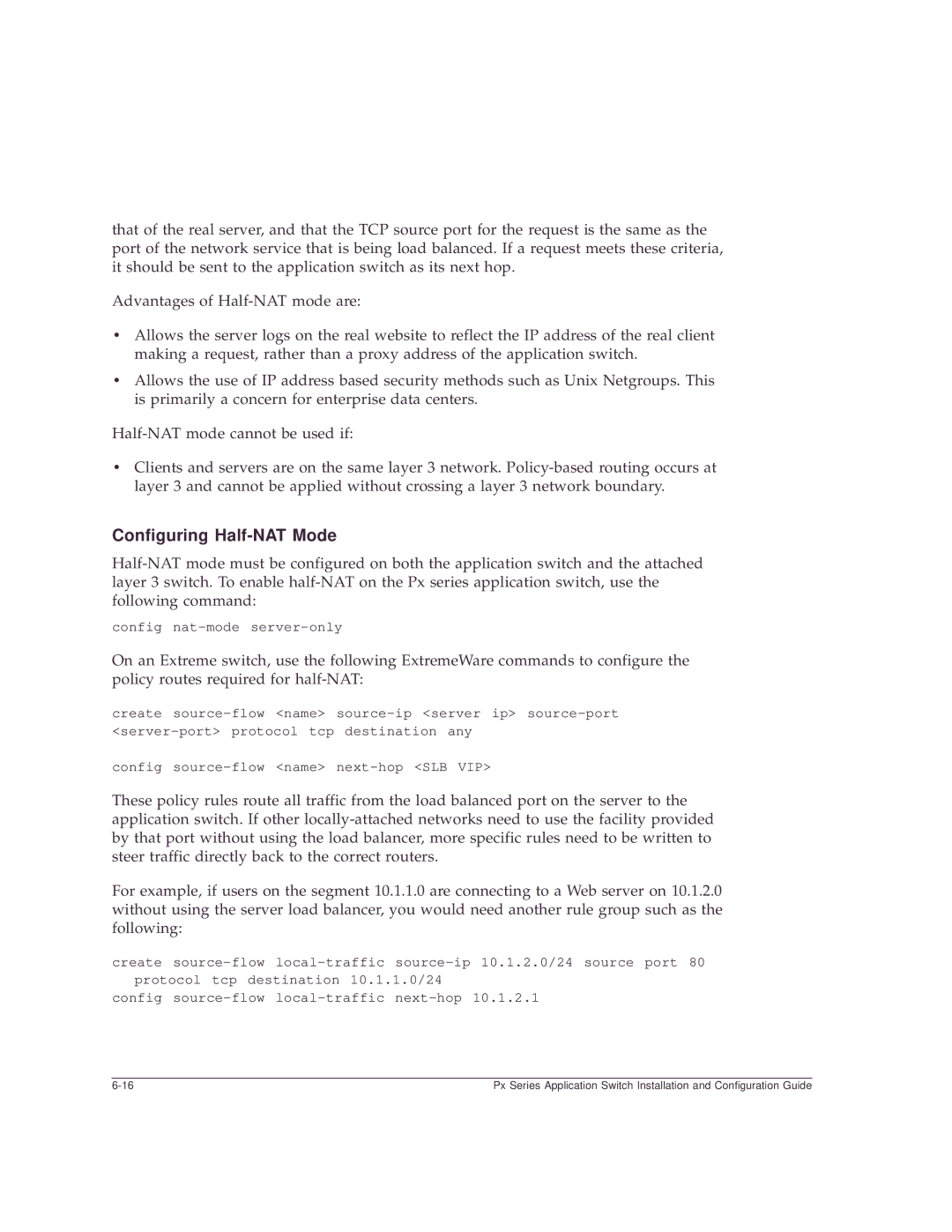that of the real server, and that the TCP source port for the request is the same as the port of the network service that is being load balanced. If a request meets these criteria, it should be sent to the application switch as its next hop.
Advantages of
•Allows the server logs on the real website to reflect the IP address of the real client making a request, rather than a proxy address of the application switch.
•Allows the use of IP address based security methods such as Unix Netgroups. This is primarily a concern for enterprise data centers.
•Clients and servers are on the same layer 3 network.
Configuring Half-NAT Mode
config
On an Extreme switch, use the following ExtremeWare commands to configure the policy routes required for
create
config
These policy rules route all traffic from the load balanced port on the server to the application switch. If other
For example, if users on the segment 10.1.1.0 are connecting to a Web server on 10.1.2.0 without using the server load balancer, you would need another rule group such as the following:
create
protocol tcp destination 10.1.1.0/24
config
Px Series Application Switch Installation and Configuration Guide |
